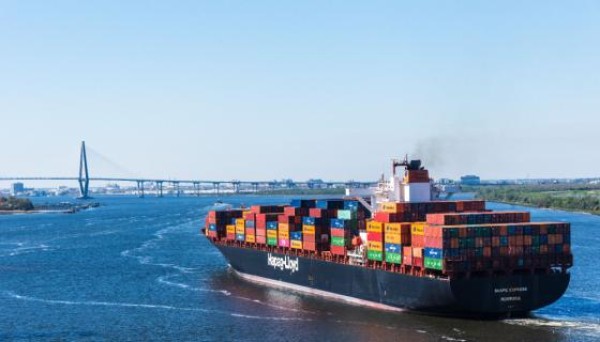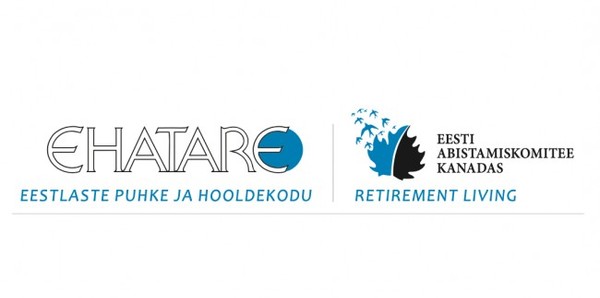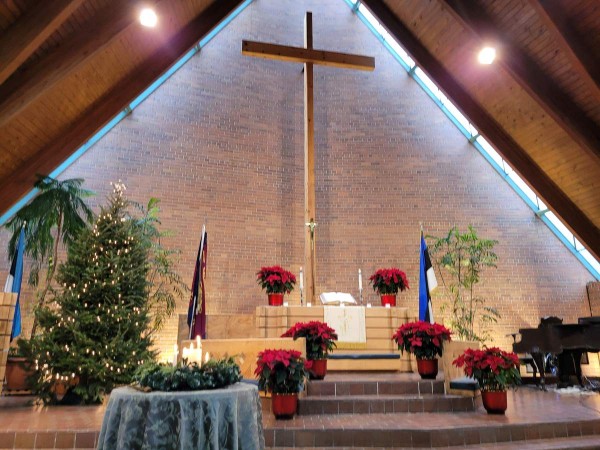2 February 2010
My dear Estonian people,
ladies and gentlemen,
We have more than one Peace of Tartu. No, I am not referring to Finland, which signed a peace treaty of its own with Soviet Russia in Tartu. Rather, I am talking about the different meanings of the Republic of Estonia’s Tartu Peace Treaty.
When I laid a wreath on the tomb of War of Independence hero Julius Kuperjanov today, I recalled that for students just a little more than 20 years ago, placing a candle at that very site meant expulsion from university and two years of forced conscription in the Soviet army.
Yet, reflecting on the death of Lieutenant Kuperjanov in the Battle of Paju, I understood that for our forefathers, the Peace of Tartu meant just that. More than anything else, it meant peace, an end to the fighting.
Nearly 90,000 men fought in the War of Independence in the ranks of the Estonian army. Ninety thousand! Close to 5,000 of them gave their lives, and 15,000 were wounded.
Thanks to the peace treaty negotiated and concluded in Tartu, those who lived could return home and start building a free Estonia. They could start remembering the fallen, and healing the wounded.
That was the meaning of the Tartu Peace Treaty for the Estonians of that era and for other nations who fought for Estonia’s freedom. It meant that a very long war, contiguous with the First World War, had ended.
Ladies and gentlemen.
Practically every other day, we mark the anniversary of some heroic feat or past event. But we would do well to give serious thought to which events truly deserve to be commemorated. What is the present-day meaning of events that took place a century, 90 or 70 years ago? What message do these events communicate to us?
As we go about the business of commemorating various events – some of them jubilees, some of them odd-numbered anniversaries – do we have the ability and the will to see our present actions in just as eternal a light? Do we think about what we are achieving today and where we want to be 50 or 90 years from now?
What I want to say is that the way we relate to history must extend beyond tired slogans. We have to start dealing with the nuances. Otherwise we will be left repeating Juhan Liiv’s aphorism –“he who does not remember the past lives without a future” – without ever asking: What should we really be remembering?
There is very much in our past that we cannot remember. It is simply beyond our knowledge. For instance, we still lack a systematic understanding of the human rights violations committed during the occupation. Of this we only have fragments, memories of individual cases, such as a candle lighting at Kuperjanov’s tomb and the events that followed.
On the other hand, there is much that we know almost too well; there is something of a cult surrounding it, with no sense of perspective.
We have grown fond of repeating, year in and year out, that the Tartu Peace Treaty is Estonia’s birth certificate. Yes, this is a good, strong metaphor. So strong in fact that we have allowed our political decision-making to be guided by the metaphor rather than reality and our national interests.
Distinguished guests.
The signing of the Tartu Peace Treaty also marked the first success story in Estonian diplomatic history, ending a war and putting our national boundary in place.
But we have to honestly admit that in the 20 years that followed, there would be no more success stories of a similar calibre. If we compare Estonia’s diplomacy in that era to our achievements in the years starting in 1991, then to put it mildly, we should have nothing to be ashamed of.
Consider just a few examples:
• the withdrawal of foreign troops, which allowed Estonia to achieve complete independence in August 1994.
• the European Union Association Agreement – a long and arduous process that led to the recognition of Estonia as a country with prospects of becoming a member of the European Union.
• accession to the WTO, which significantly increased Estonia’s export potential This was a diplomatic effort that spanned many years and has no rival among the trade agreements concluded in the era before the Second World War.
• the long and determined efforts undertaken to prove that we are no inferior to any other country, vindicated by Estonia becoming one of the first countries to be invited to European Union accession negotiations. This event now tends to be viewed cavalierly or even taken for granted.
• the ensuing five-year-long accession negotiations with the European Union, about which books have yet to be written.
• our long road to NATO, in which Estonian diplomacy was engaged for 12 straight years, the marvellous nature of which has completely faded in just a few years.
I give these examples only so that we would be better able to view and evaluate the diplomatic achievements of the Republic of Estonia in different eras.
After all, in the case of a 90-year-old, it is perfectly fair to ask: Do you have anything else to show besides your handsome-looking birth certificate? Is the birth certificate the highlight, the most you ever accomplished?
Looking at Estonia’s achievements, I think we have been held back too long by the view that the years from 1920-1940 were the best times of the Estonian people’s lives. It is high time to bid farewell to that view.
Certainly it appeared that way in the long, oppressive years of the occupation that followed – the pre-war Republic may well have seemed like the most glorious epoch in our people’s history. But looking back with honesty, instead we could be proud of everything we have accomplished in the last two decades.
Societies and states are like people. Getting bogged down in clichéd thinking brings your progress to a halt. If another person or country is able to move beyond clichés, they pass you.
This is why it is so important for Estonia to rid itself of these idées fixes, its traumatic historical fears that our allies want to “sell us out” or that NATO “will not come to our aid” if something extraordinarily bad should occur from the standpoint of Estonia’s security.
Similarly, we should be able to remind ourselves soberly that our status as full members of the European Union, NATO and the UN is not in any way rendered less potent just because some country does not recognize the historical fact and legal continuity of the Tartu Peace Treaty.
It would behove us to finally accept that, compared to our former situation or to countries still trying to become democratic, Estonian statehood and democracy are in pretty good shape.
We should acknowledge that Estonia’s security policy situation depends on our everyday work and efforts, on our credibility and our commitment to our goals, and not on signatures such as the ones on the Tartu Peace Treaty or the NATO treaty.
Maybe then the objective truth would get through to us, which is that right now, Estonia’s security is safer than it has ever been in our nation’s history.
Perhaps then we would realize that diplomacy – just like the efforts in the field of national security – is a consistent, everyday process, and that together, we have achieved many times more in this area than we did in the entire pre-war period.
In light of the chronic discontent and largely groundless sense of insecurity that plagues us today, let us consider that the achievements of Estonia’s first era of independence began to be taken seriously and appreciated – even surrounded by a saintly halo – only after the Republic had been taken away from the Estonian people.
I am more than convinced that the framers of the Republic and the negotiators of the Tartu Peace Treaty would want only one thing from us: that we turn the page, that Estonian diplomacy be creative and flexible, that we be able to rid ourselves of our idées fixes.
Surely they would counsel us to remember that Estonia’s goal can only ever be to safeguard its citizens’ liberty and pursuit of happiness, which – let us be honest – need not always coincide with some other (albeit intellectually exciting) task such as proving our historical right.
Independence is not determined or formalized by any document or signature on a document. For proof, we need only look at the Tartu Peace Treaty, which was supposed to bring us peace and independence “for ever”.
Similarly, our Constitution in no way automatically imparts permanence to our democratic system of government. If we fail to reaffirm our independence daily, and instead put our hopes in documents and signatures, only the semblance of independence can be guaranteed.
If we treat the Constitution like a piece of paper that can be followed and adhered to only selectively, then our democratic system of government will remain selective.
Estonia’s independence and sovereignty does not depend on one or two documents signed nearly a century ago. Nor does it depend on who recognizes the documents today. The independence of the Republic of Estonia, a member state of the NATO and European Union, is no less real or secure just because some other country does not currently recognize the Tartu Peace Treaty.
Ladies and gentlemen.
If we speak only of treaties, Estonia’s sovereignty and independence is guaranteed by the thousands upon thousands of foreign treaties and pieces of legislation, which we know today as the legal space that governs everyday life in Estonia.
But much more important: our independence and sovereignty are ensured by adherence to law and respect for the rights of fellow citizens, and the fact that Estonia is a state governed by the rule of law.
The guarantees of our independence are Estonia’s defence forces and police, rescue board and border guard, the Estonian Defence League and the Women’s Voluntary Defence Organization, our schools and educational system, our unemployment insurance and health care system.
The guarantee of Estonian independence is an efficiently functioning government, and an intelligent, healthy and enlightened people. And, as we have learned from our history, the foundation for all this is a democratic system of government.
Taking all of this into consideration, we also have to realize that Estonia’s position in the world has changed a great deal in the 90 years since the Tartu Peace Treaty was signed.
From the standpoint of security, which I already spoke of, we can feel more secure than ever before thanks to our extremely close cooperation with our allies and partners.
Yet we are open and engaged in every other sphere as well. The largely self-absorbed Estonia of the last century did not have to attend to this aspect.
Our openness makes us vulnerable and dependent on factors that are beyond the control of the Estonian government, the Riigikogu and ordinary citizens. No treaty can ever stipulate our economic status and well-being. That is the case for everyone – not just Estonia but Finland, Spain and Great Britain as well.
When the Ford car manufacturer starts cutting costs in the American city of Detroit, it is bound to have an effect on Sweden’s Volvo, which is owned by Ford. The effect radiates to a small company on the island of Saaremaa that manufactures electrical wiring for Volvo cars.
To cope in such an open world, we have to be in the business of educating ourselves and acquiring new skills. Contracts or legally substantiated rights in some international issue will not help us in such an open world. What helps us in an open world is knowledge. What helps us is our preparedness to manufacture new things or to make old things in a new way.
All of this together – our loyalty to the rule of law and democracy, our desire to learn and be ready for change – will ensure our everyday security within ourselves.
Ladies and gentlemen.
Isaac Newton, the father of classical physics, once said: “If I have seen further, it is only by standing on the shoulders of giants.”
He was intimating that had he not studied the work of his predecessors, he would not have been able to create a completely new branch of science, empirical and theoretical physics.
Likewise, we must acknowledge those who had the courage and perseverance to fight Republic of Estonia at the cost of great sacrifices. We must honour those who managed in seven weeks to end the war, put in place the boundaries and even secure reparations.
But we must also understand Newton’s words in the sense that if he had not tried to see further, if he had settled for merely the accomplishments of the giants before him, physics would have remained on a semi-scientific, faith-based footing.
We, too, are standing on the shoulders of giants. The delegation formed by Jaan Tõnisson’s government –
Jaan Poska, the former commissioner of the province of Estonia and the first Minister of Foreign Affairs of the Republic of Estonia,
and the members of the delegation Ants Piip, the strongest diplomat of the pre-war Republic of Estonia and member of the Constituent Assembly, Julius Seljamaa and Mait Püüman, both members of the Constituent Assembly; and Major General Jaan Soots –
concluded our country’s first foreign treaty as a result of the negotiations held from December 1919 to February 1920.
They ended the war. They allowed their fellow citizens to begin the work of establishing the peacetime Republic of Estonia. They made it possible for us, 70 years later, to begin restoring Estonia’s institutions and rebuilding Estonia.
In our quest to relate to the accomplishments of our past, we might also heed the words of another great physicist, Albert Einstein, whose theory of relativity signalled a new revolution stemming from Newton’s own scientific revolution in an earlier era.
Einstein said, and I quote:
“A hundred times every day I remind myself that my inner and outer life depend on the labours of other men, living and dead, and that I must exert myself in order to give in the same measure as I have received and am still receiving.”
Today, let us remember what was achieved here in Tartu 90 years ago. And may we exert just as great an effort, for our own sake and for the sake of posterity.
Thank you.
( http://www.president.ee/en/med... )
President of the Republic at the ceremony commemorating the 90th anniversary of the Tartu Peace Treaty, Vanemuine Concert Hall, Tartu
Eestlased Eestis | 03 Feb 2010 | EWR
Eestlased Eestis
TRENDING
























